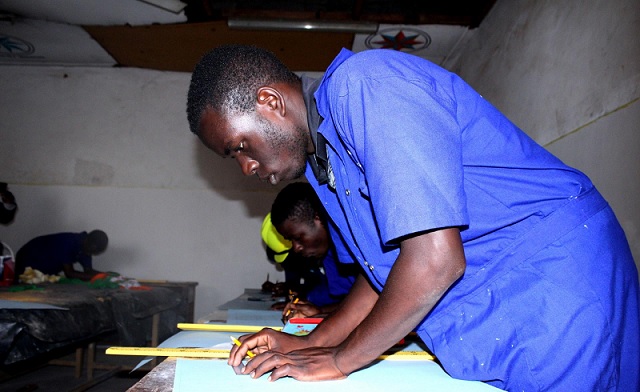
Kampala, Uganda | THE INDEPENDENT | A study conducted by Uganda Business and Technical Examinations Board-UBTEB reveals promising employment outcomes for technical, vocational education, and training (TVET) graduates.
The study, which is the first of its nature in the TVET sector, indicates that 63 percent of graduates from various institutions can secure employment within the first year after completing their education.
Lilian Nakawala, Senior Research Officer at UBTEB, who presented the findings to different players in the sector on Tuesday said even when the period is lowered to six months, results show that more graduates get to the world of work.
“From the study, it was found that 50% of graduates secured employment within the first six months, with an additional 20% finding employment within weeks after graduation. This includes both self-employment and employment by other entities. It’s noteworthy that many of those entering the workforce quickly are retained by various organizations, while others establish their ventures,” she emphasized.
The study which was carried out last year, specifically targeted graduates of national diploma programs in civil, mechanical, electrical, and water engineering.
Its primary objective was to gain insights into the employment status of these graduates and to assess the relevance of TVET education and curricula in preparing them for the workforce.
The research included 249 TVET graduates who graduated between 2016 and 2019, as well as 39 employers. Results showed that, on average, 82 percent of the graduates were employed while 18 percent were unemployed. Among the disciplines, mechanical engineering boasted the highest employment rate at 86 percent, while water engineering had the lowest at 73 percent.
Out of the interviewed graduates, 161 were employed in regular jobs, 18 were engaged in occasional work, 25 were unemployed, 28 were actively seeking employment, and 17 were pursuing further studies. Additionally, 66 percent of the graduates were employed in positions matching their education, while 34 percent were involved in fields unrelated to their studies. Notably, there were instances observed where individuals trained in water engineering were employed as receptionists or office assistants.
According to feedback from employers, they unanimously certified that engineering diploma graduates are well-equipped with practical skills for the job market. Moreover, 90 percent of employers expressed that TVET graduates assessed by UBTEB demonstrate greater skillfulness compared to university graduates.
“UBTEB graduates are more practical oriented because they are skilled due to practical exposure, because of real-life projects done. They don’t need more attention at the time of recruitment like we do to university students, we don’t struggle much when a new practical idea is initiated, they know and understand how to use tools and machines compared to university students,” one of the employers interviewed for the study noted.
While the study highlights positive aspects of TVET graduates, it also identifies shortcomings, particularly in entrepreneurship and communication skills. The deficiency in entrepreneurial skills is evident in the relatively low number of self-employed graduates.
The imbalance between the number of graduates employed in traditional roles versus those who are self-employed has raised concerns. One of the proposed solutions is to incorporate entrepreneurship training into the existing curriculum for TVET graduates. This would nurture their creativity and innovation, empowering them to initiate and effectively manage their businesses.
Commenting on the study, the Executive Secretary of UBTEB Onesmus Oyesigye highlighted that the data provides a vivid illustration of the employability and significance of TVET education and curricula with a significant milestone in comprehending the outcomes of TVET programs. However, he emphasized that the identified weaknesses, for instance, low entrepreneurial skills, will be addressed and will inform subsequent curriculum reviews.
Sam Byagweri, Principal of UTC Bushenyi, acknowledged that the presented data helps to explain the high demand curve for TVET, as it indicates the high employability of TVET graduates. However, he issued a cautionary warning that institutions and the TVET sector as a whole need to anticipate and address future challenges, particularly concerning the potential inability to manage the growing numbers of enrollees.
“With such high employability numbers, enrollments are increasing, but with a large number, there is a risk of compromising quality. Let’s explore ways to maintain quality, as it is the key driver of employability. We need to prioritize more industrial training… the current equipment may not be sufficient to provide students with all the necessary skills,” said Byagweri.
Over the past decade, over 69,821 TVET graduates have been passed out and entered the workforce, yet the specifics regarding their employment, such as when, where, and how they secure jobs, have been unclear.
In his commentary on the study, Cosmas Muhumuza, Higher Education Officer for Research and Innovation at the National Council for Higher Education, cautioned that considering the significant number of students who have graduated over the years under UBTEB, the sample size appears to be small.
“We understand that this was the first tracer study. But, moving forward, the board needs to increase the number of respondents, both graduates and employers,” Muhumuza remarked.
Douglas Opio, Executive Director of the Federation of Uganda Employers, also pointed out that the report did not sufficiently address soft skills and ethics. Based on his experience, Opio stressed that this area requires more attention for all graduates, irrespective of their academic level, as an increasing number of recent graduates lack soft skills.
*****
URN
 The Independent Uganda: You get the Truth we Pay the Price
The Independent Uganda: You get the Truth we Pay the Price



